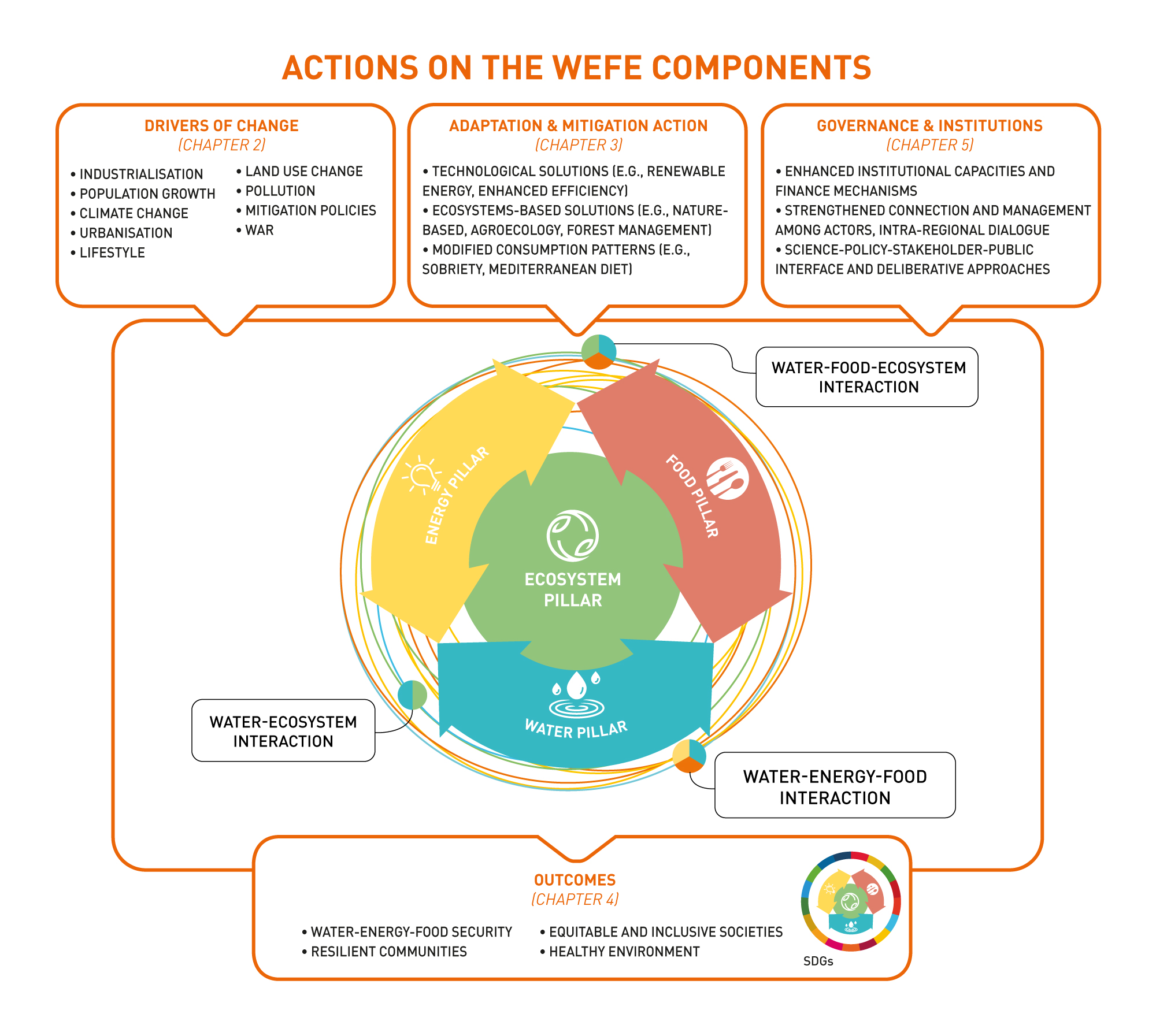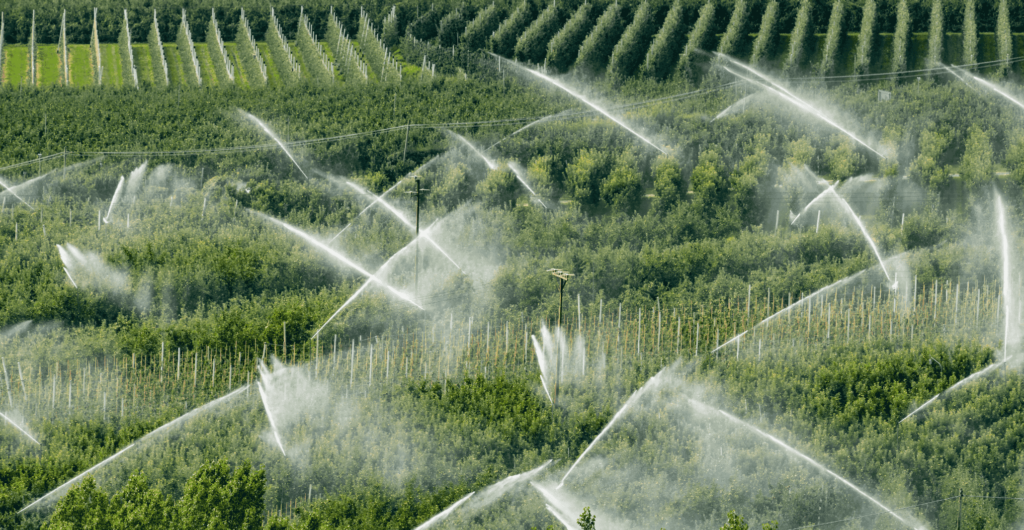Home » MedECC reports » Special Report Interlinking climate change with the Water – Energy – Food – Ecosystems (WEFE) nexus in the Mediterranean Basin » Chapter 1. Introduction: Water-Energy-Food-Ecosystems (WEFE) nexus concept in the Mediterranean area
Special Report Interlinking climate change with the Water - Energy - Food - Ecosystems (WEFE) nexus in the Mediterranean Basin
Chapter 1. Introduction: Water-Energy-Food-Ecosystems (WEFE) nexus concept in the Mediterranean area
Executive Summary
In the intricate web of interconnected social, economic, and ecological systems, the relationships between water, food, energy, and ecosystems stand as undeniable pillars. These essential resources are under strong pressure from both direct and indirect drivers, including climate change, pollution, population growth, unsustainable consumption and production patterns, rapid urbanisation and unsustainable natural resource management, negatively impacting the livelihoods of millions throughout the Mediterranean and hindering progress towards the Sustainable Development Goals (SDGs). The effects of these pressures on resources are far-reaching, with adverse effects on communities and economies only partially mitigated by external resource imports.
The Mediterranean Basin is recognised as a “hotspot” for both climate change and water scarcity. Over the past fifty years, per capita water resources have significantly diminished, especially in the eastern and southern Mediterranean regions. This scarcity is compounded by existing conflicts, economic vulnerabilities, and social disparities.
The Water-Energy-Food-Ecosystem (WEFE) nexus approach aims to increase security in these vital domains, without compromising ecosystem health. Through the analysis of connections and interactions between these components, the WEFE approach seeks to optimise synergies and manage trade-offs between different technical and strategic responses. The nexus concept is applicable across various scales, ranging from local to global-regional contexts, allowing for comprehensive management strategies. At regional scales, water, energy and food security include imports and exports.
There is a growing need for transformation, and a paradigm shift in consumption and production patterns alongside changes in governance. Adopting the WEFE nexus approach involves moving away from fragmented sectoral development interventions towards integrated natural resource management and use. It presents opportunities to transform agrifood towards sustainability and contributes to fostering peace, as well as resilience and security for both humanity and ecosystems. Integrating the WEFE nexus into national policies and development plans emerges as a way to support SDG implementation, aligning with the interconnected nature of these global objectives. With its components present in 14 out of the 17 SDGs, the WEFE nexus emerges as highly relevant in the pursuit of these goals. In summary, there is a need to adopt a comprehensive and integrated approach to address the multifaceted challenges posed by resource pressures, climate change, and sustainable development in the Mediterranean region.

Figure 1.1 | Schematic of the WEFE concept. WEFE components in the circle, with some examples of two-way interactions between them. Ecosystems are at the centre to highlight that all the other components depend on healthy ecosystems. Outer boxes refer to direct and indirect drivers of change impacting the WEFE (top); governance and institutions (left); actions (right) and outcomes (bottom) achieved by implementing a nexus approach.
How to cite the report
Contributors
Coordinating Lead Authors

Philippe
Drobinski
Laboratoire de Météorologie Dynamique / Institut Pierre Simon Laplace & Energy4Climate Interdisciplinary Center / France
hide

Mohamed
Abdel Monem
Senior Advisor for Climate Change and Rural Development / Egypt
hide

Marta Guadalupe
Rivera Ferre
INGENIO (CSIC-UPV) / Spain
hide

Fabio G.
Santeramo
University of Foggia / Italy
hide


